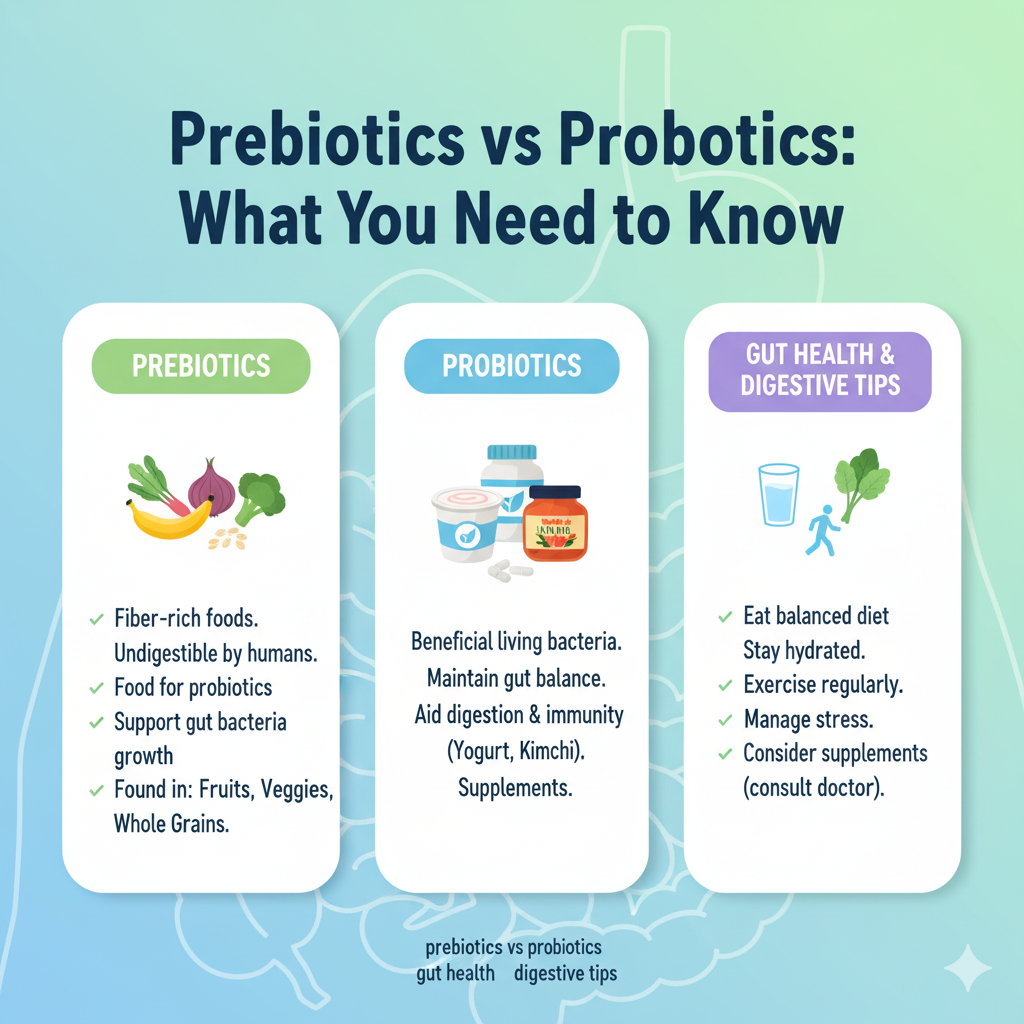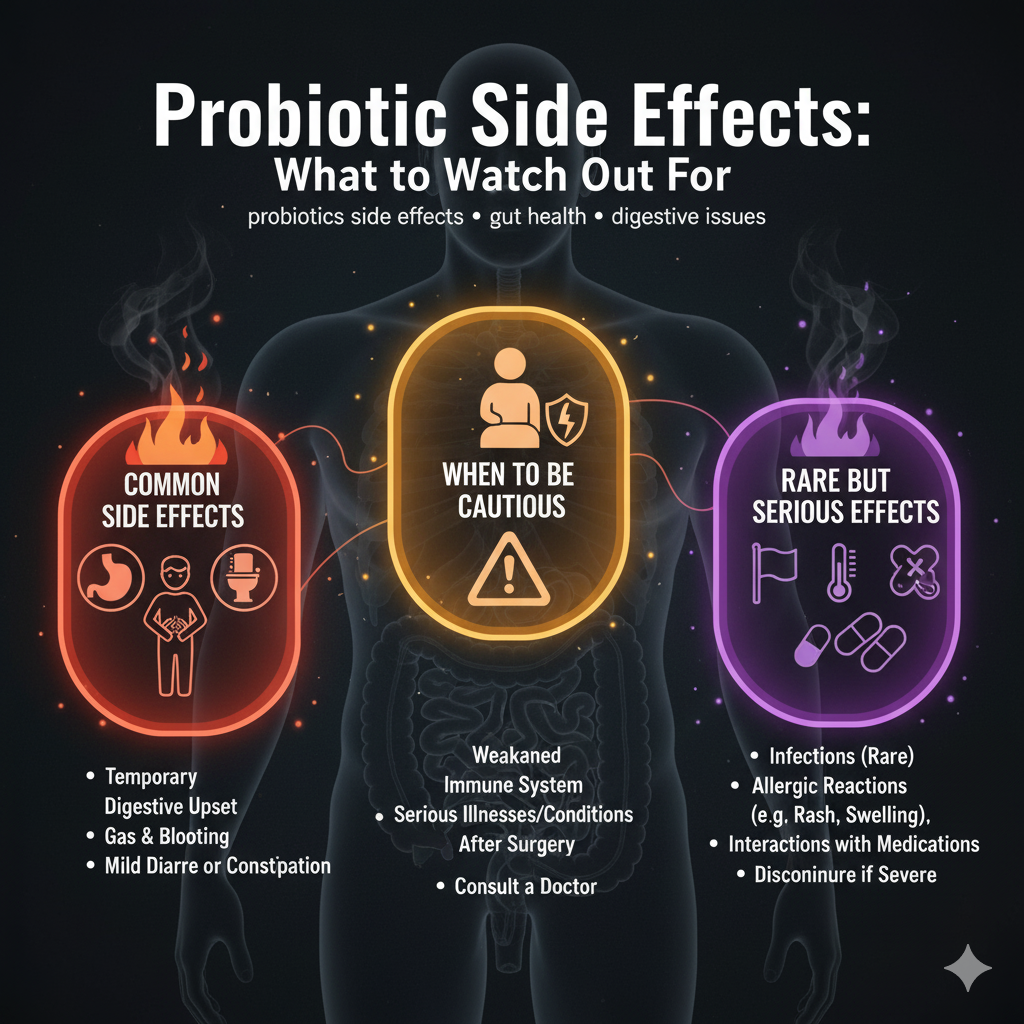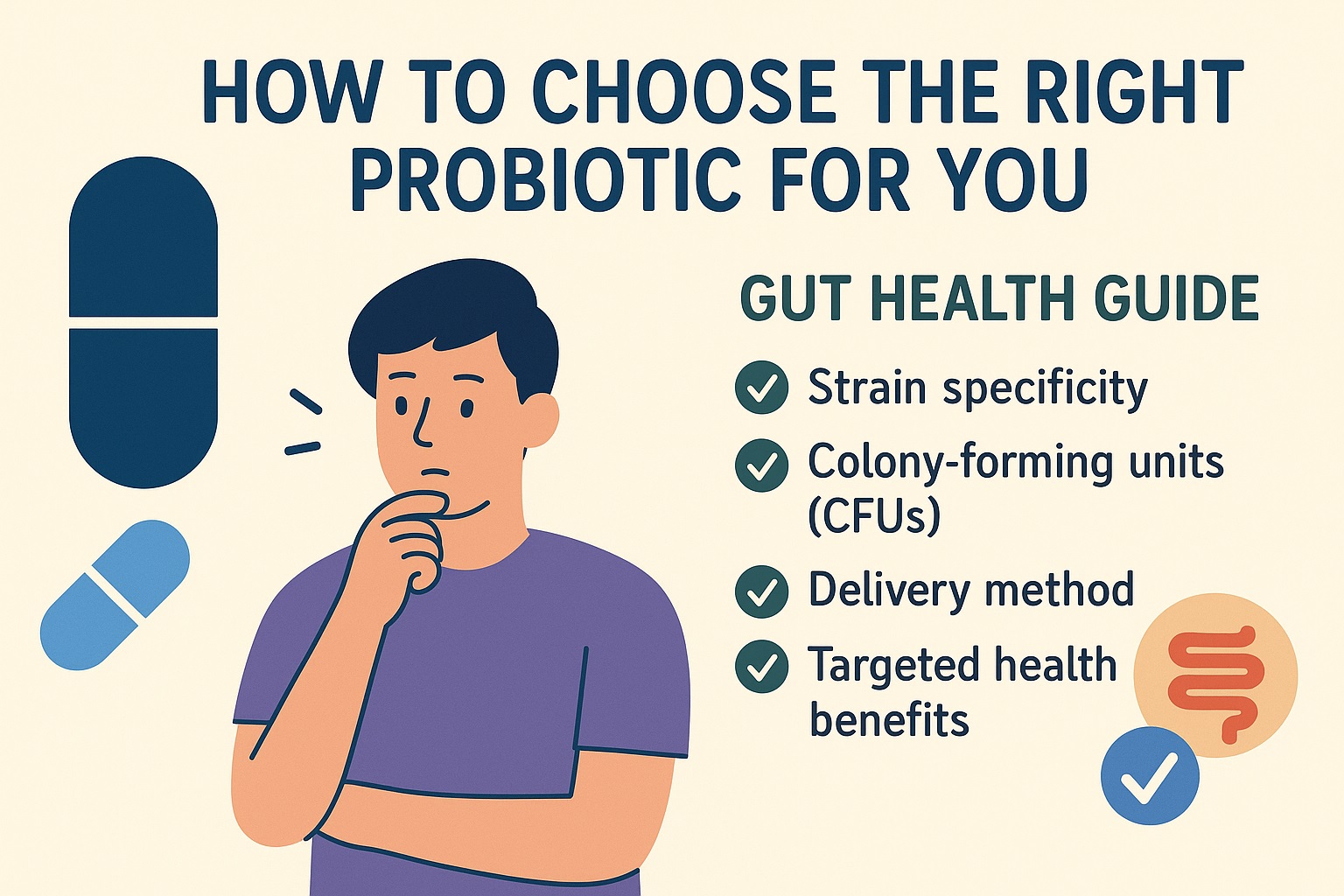Gut health has become one of the most talked-about topics in the world of wellness, nutrition, and medicine. We now know that the gut is more than just a place where food is digested — it’s home to trillions of bacteria, fungi, and other microbes that play a crucial role in overall health. When it comes to supporting the gut microbiome, two terms come up repeatedly: prebiotics and probiotics.
Though they sound similar, prebiotics and probiotics are very different in their function and benefits. Understanding what they are, how they work, and where to find them can help you make informed decisions for better digestion, immunity, and overall well-being.
In this article, we’ll break down the difference between prebiotics and probiotics, their benefits, natural sources, and how to incorporate them into your diet effectively.
What Are Probiotics?
Probiotics are live microorganisms — mostly bacteria, but sometimes yeast — that provide health benefits when consumed in adequate amounts. Think of them as the “good bacteria” that help balance your gut microbiome.
When you consume probiotics, you are adding more beneficial bacteria to your digestive system. This can be especially helpful if your natural gut flora has been disrupted by factors such as antibiotics, illness, poor diet, or high stress.
Key Benefits of Probiotics
Research has shown that probiotics can:
- Improve digestion: They help break down food and absorb nutrients more efficiently.
- Support the immune system: Around 70% of the immune system is in the gut, so a healthy microbiome can strengthen immunity.
- Prevent diarrhea: Especially antibiotic-associated diarrhea or traveler’s diarrhea.
- Alleviate certain digestive disorders: Some probiotic strains may help manage symptoms of irritable bowel syndrome (IBS), ulcerative colitis, and lactose intolerance.
- Promote vaginal health: Certain probiotic strains may help maintain a healthy vaginal microbiome.
Common Sources of Probiotics
You can find probiotics in both foods and supplements. Naturally fermented foods are the best place to start:
- Yogurt with live cultures
- Kefir (fermented milk drink)
- Sauerkraut
- Kimchi
- Miso
- Tempeh
- Kombucha (fermented tea)
Probiotic supplements are also widely available, but not all are created equal. Different strains of probiotics provide different benefits, so it’s important to choose one that matches your specific needs.
What Are Prebiotics?
Prebiotics, on the other hand, are not live bacteria — they are specialized types of dietary fiber that serve as food for the beneficial bacteria already living in your gut. Think of prebiotics as the fertilizer that helps your good bacteria grow and thrive.
When you eat prebiotics, they pass through the small intestine undigested and reach the colon, where they are fermented by gut bacteria. This fermentation process produces short-chain fatty acids (SCFAs), which provide energy for intestinal cells and help maintain a healthy gut lining.
Key Benefits of Prebiotics
Including prebiotics in your diet can:
- Promote the growth of good bacteria: This leads to a more diverse and resilient microbiome.
- Improve digestion and regularity: Prebiotics can increase stool bulk and help prevent constipation.
- Support gut barrier function: SCFAs help protect the intestinal lining, reducing inflammation.
- Enhance mineral absorption: Prebiotics may improve calcium and magnesium absorption, which benefits bone health.
- Strengthen immunity: By supporting healthy gut flora, prebiotics indirectly boost immune function.
Common Sources of Prebiotics
Prebiotics are naturally found in many plant-based foods, especially those rich in soluble fiber:
- Garlic
- Onions
- Leeks
- Asparagus
- Bananas (especially slightly green ones)
- Apples
- Chicory root
- Jerusalem artichokes
- Whole grains like oats and barley
- Legumes (beans, lentils, chickpeas)
Prebiotics vs Probiotics: The Key Differences
Though prebiotics and probiotics are both crucial for gut health, they play very different roles:
| Aspect | Prebiotics | Probiotics |
|---|---|---|
| What They Are | Non-digestible fibers that feed beneficial bacteria | Live beneficial bacteria |
| Function | Nourish and stimulate the growth of existing good bacteria | Add new good bacteria to the gut |
| Sources | Plant-based foods rich in fiber | Fermented foods and supplements |
| When to Focus On Them | For ongoing gut health maintenance | After illness, antibiotics, or gut imbalance |
| Benefits | Improved digestion, mineral absorption, immune support | Restore gut balance, help with diarrhea, support digestion |
Essentially, probiotics add soldiers to your gut army, while prebiotics feed the soldiers that are already there. Both are important for a thriving microbiome.
Why You Need Both for Optimal Gut Health
Focusing on only one side of the equation — either just probiotics or just prebiotics — might not give you the best results. Probiotics can’t thrive without proper nourishment, and prebiotics can’t do much good if you don’t have enough good bacteria to feed.
When consumed together, prebiotics and probiotics create what is known as synbiotics — a powerful combination that improves the survival and activity of beneficial bacteria in the gut.
For example, a meal that includes both yogurt (probiotics) and oats with banana (prebiotics) provides a gut-friendly boost that works synergistically.
How to Incorporate Prebiotics and Probiotics Into Your Diet
Supporting gut health doesn’t have to be complicated. Here are practical tips to make prebiotics and probiotics part of your daily routine:
- Start Your Day Gut-Friendly:
Add sliced banana to a bowl of yogurt or kefir for a prebiotic-probiotic combo. - Snack Smart:
Choose fiber-rich fruits like apples or pears, and pair them with a probiotic-rich food like cheese or a small serving of kimchi. - Cook with Prebiotic-Rich Ingredients:
Add onions, garlic, and leeks to soups, stews, and stir-fries. - Experiment with Fermented Foods:
Try sauerkraut on a sandwich, miso soup with dinner, or kombucha as an alternative to soda. - Stay Consistent:
Both prebiotics and probiotics work best when consumed regularly. A single serving occasionally won’t have a lasting effect — consistency is key.
Common Mistakes to Avoid
While adding prebiotics and probiotics to your diet is beneficial, there are a few common pitfalls to watch out for:
- Taking too many probiotic supplements: More is not always better. Excessive supplementation can cause bloating or discomfort.
- Ignoring diet quality: Probiotics can’t compensate for a poor diet. Processed foods and excessive sugar can harm the microbiome, no matter how many probiotics you take.
- Introducing prebiotics too quickly: A sudden increase in prebiotic fiber can cause gas and bloating. Increase intake gradually to allow your gut to adjust.
- Not checking probiotic strain information: Choose products that specify the strains and CFU (colony-forming units) on the label, and ensure they are clinically tested.
Final Thoughts
The health of your gut microbiome impacts digestion, immunity, mood, and even long-term disease risk. Understanding the difference between prebiotics and probiotics — and including both in your diet — is one of the most effective ways to nurture a balanced and diverse gut ecosystem.
Rather than focusing on expensive supplements, start by incorporating a variety of fiber-rich plant foods and fermented foods into your daily routine. Over time, these small but consistent habits can have a big impact on your digestive health and overall well-being.





This was such a clear and informative read! I always knew probiotics were important, but I didn’t fully understand the role of prebiotics until now. I liked how you explained the difference in simple terms and gave practical examples of foods that support gut health. It definitely motivated me to be more mindful about including both in my diet.